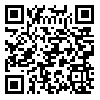Volume 7, Issue 1 (Spring 2020)
johe 2020, 7(1): 11-20 |
Back to browse issues page
Download citation:
BibTeX | RIS | EndNote | Medlars | ProCite | Reference Manager | RefWorks
Send citation to:



BibTeX | RIS | EndNote | Medlars | ProCite | Reference Manager | RefWorks
Send citation to:
sadeghi yarandi M, torabi goodarzi S, pourbabaki R, samiei S. A Comparative Study of NERPA, RULA and LUBA Methods in Predicting the Risk of Upper Limb Musculoskeletal Disorders in the Household Manufacturing Industry. johe 2020; 7 (1) :11-20
URL: http://johe.umsha.ac.ir/article-1-540-en.html
URL: http://johe.umsha.ac.ir/article-1-540-en.html
1- Department of Occupational Health Engineering, School of Public Health, Tehran University of Medical Sciences, Tehran, Iran , eng.sadeghi1995@gmail.com
2- Department of Occupational Health Engineering, School of Public Health, Tehran University of Medical Sciences, Tehran, Iran
2- Department of Occupational Health Engineering, School of Public Health, Tehran University of Medical Sciences, Tehran, Iran
Abstract: (7437 Views)
Background and Objective: Work-related upper limb disorders (WRULDs) are among the main causes of disability in industrial workers. Regarding this, the present study aimed to compare novel ergonomic postural assessment (NERPA), rapid upper limb assessment (RULA), and loading upper body assessment (LUBA) methods in predicting the risk of upper limb musculoskeletal disorders in the workers of household manufacturing industry.
Materials and Methods: This cross-sectional study was conducted on 346 employees in the operational sector of a household manufacturing industry, in six occupational groups. The Nordic General Questionnaire was used to determine the prevalence of musculoskeletal disorders. Furthermore, LUBA, RULA, and NERPA methods were employed to predict the risk of upper limb musculoskeletal disorders. Finally, the values measured by the Nordic General Questionnaire and those predicted by the three mentioned methods were analyzed by the Spearman correlation coefficient and Kappa coefficient in SPSS software (version 25) at a significance level of 0.05.
Results: The mean age and work experience of the participants were 39.52±4.81 and 9.17±4.61 years, respectively. The correlation coefficients between the measured and predicted levels of musculoskeletal disorders by RULA, NERPA, and LUBA methods were obtained as 0.701, 0.691, and 0.629, respectively (P<0.05). Moreover, the correlation coefficients of the predicted risk levels in RULA with the obtained risk levels in NERPA and LUBA methods were 0.713 and 0.619, respectively (P<0.05).
Conclusion: The results of the present study revealed the RULA method as the best technique for predicting the risk of the prevalence of upper limb musculoskeletal disorders among the different examined tasks. Finally,
it was determined that none of the studied methods had adequate comprehensiveness to assess all of the four risk levels. Therefore, it is suggested that newer methods be developed based on the correction and better division of angles
Materials and Methods: This cross-sectional study was conducted on 346 employees in the operational sector of a household manufacturing industry, in six occupational groups. The Nordic General Questionnaire was used to determine the prevalence of musculoskeletal disorders. Furthermore, LUBA, RULA, and NERPA methods were employed to predict the risk of upper limb musculoskeletal disorders. Finally, the values measured by the Nordic General Questionnaire and those predicted by the three mentioned methods were analyzed by the Spearman correlation coefficient and Kappa coefficient in SPSS software (version 25) at a significance level of 0.05.
Results: The mean age and work experience of the participants were 39.52±4.81 and 9.17±4.61 years, respectively. The correlation coefficients between the measured and predicted levels of musculoskeletal disorders by RULA, NERPA, and LUBA methods were obtained as 0.701, 0.691, and 0.629, respectively (P<0.05). Moreover, the correlation coefficients of the predicted risk levels in RULA with the obtained risk levels in NERPA and LUBA methods were 0.713 and 0.619, respectively (P<0.05).
Conclusion: The results of the present study revealed the RULA method as the best technique for predicting the risk of the prevalence of upper limb musculoskeletal disorders among the different examined tasks. Finally,
it was determined that none of the studied methods had adequate comprehensiveness to assess all of the four risk levels. Therefore, it is suggested that newer methods be developed based on the correction and better division of angles
Type of Study: Research Article |
Subject:
Ergonomics
Extended Abstract [HTML 25 KB] (255 Download)
Send email to the article author
| Rights and permissions | |
 |
This work is licensed under a Creative Commons Attribution-NonCommercial 4.0 International License. |







